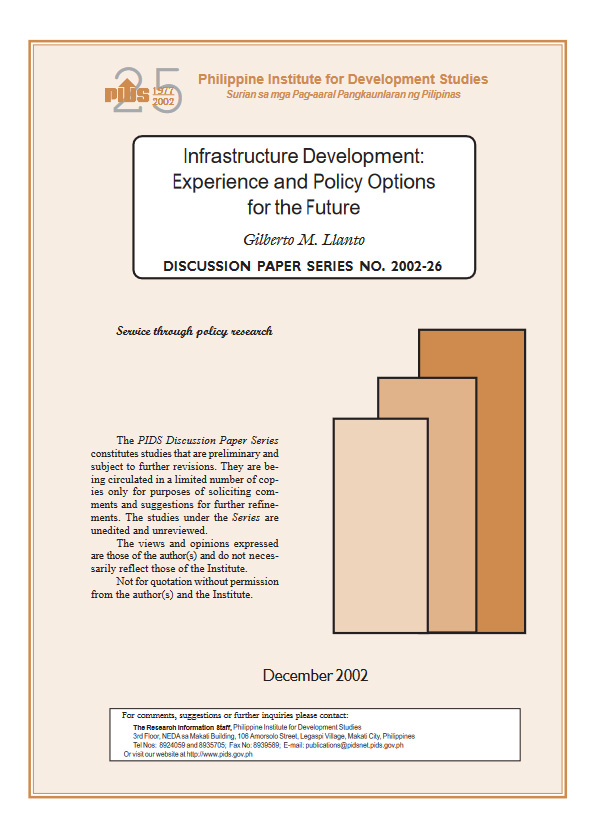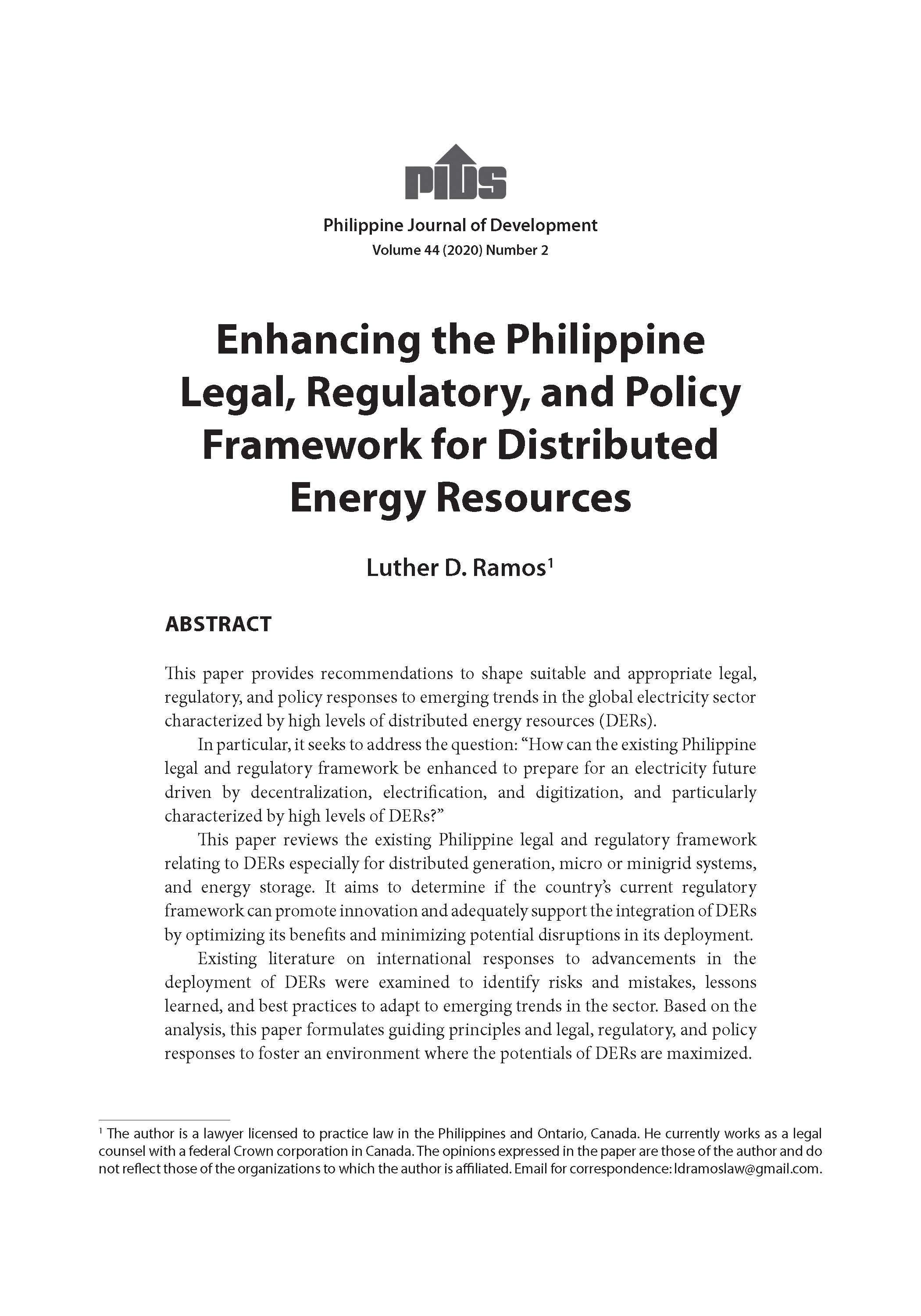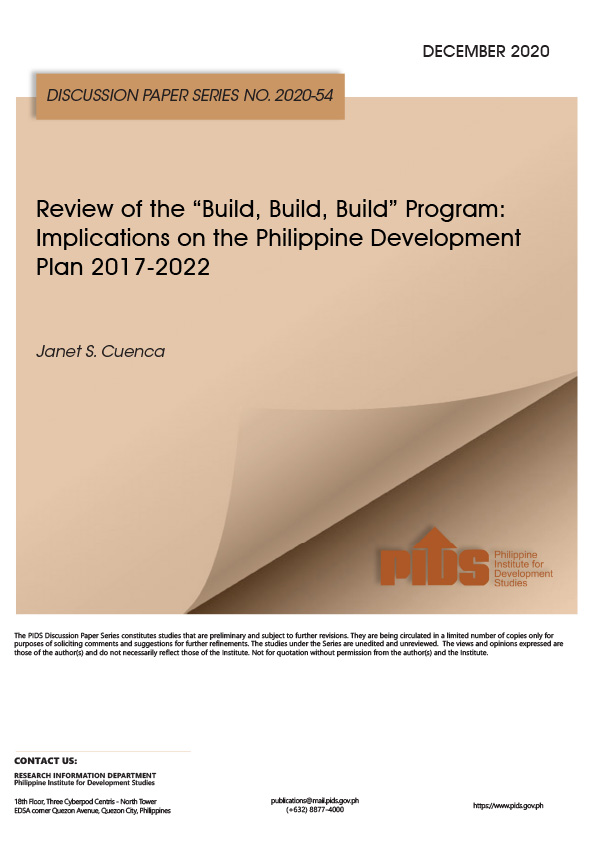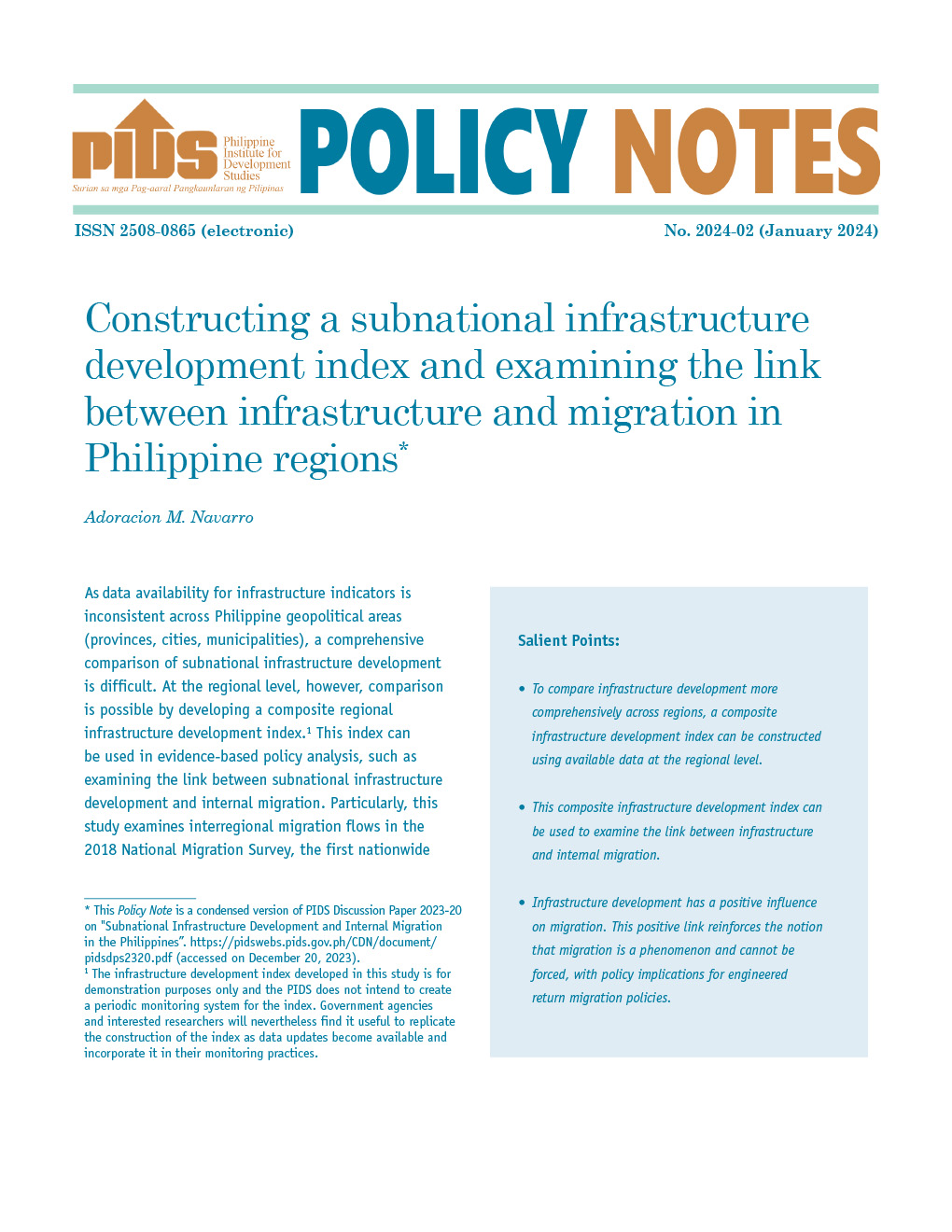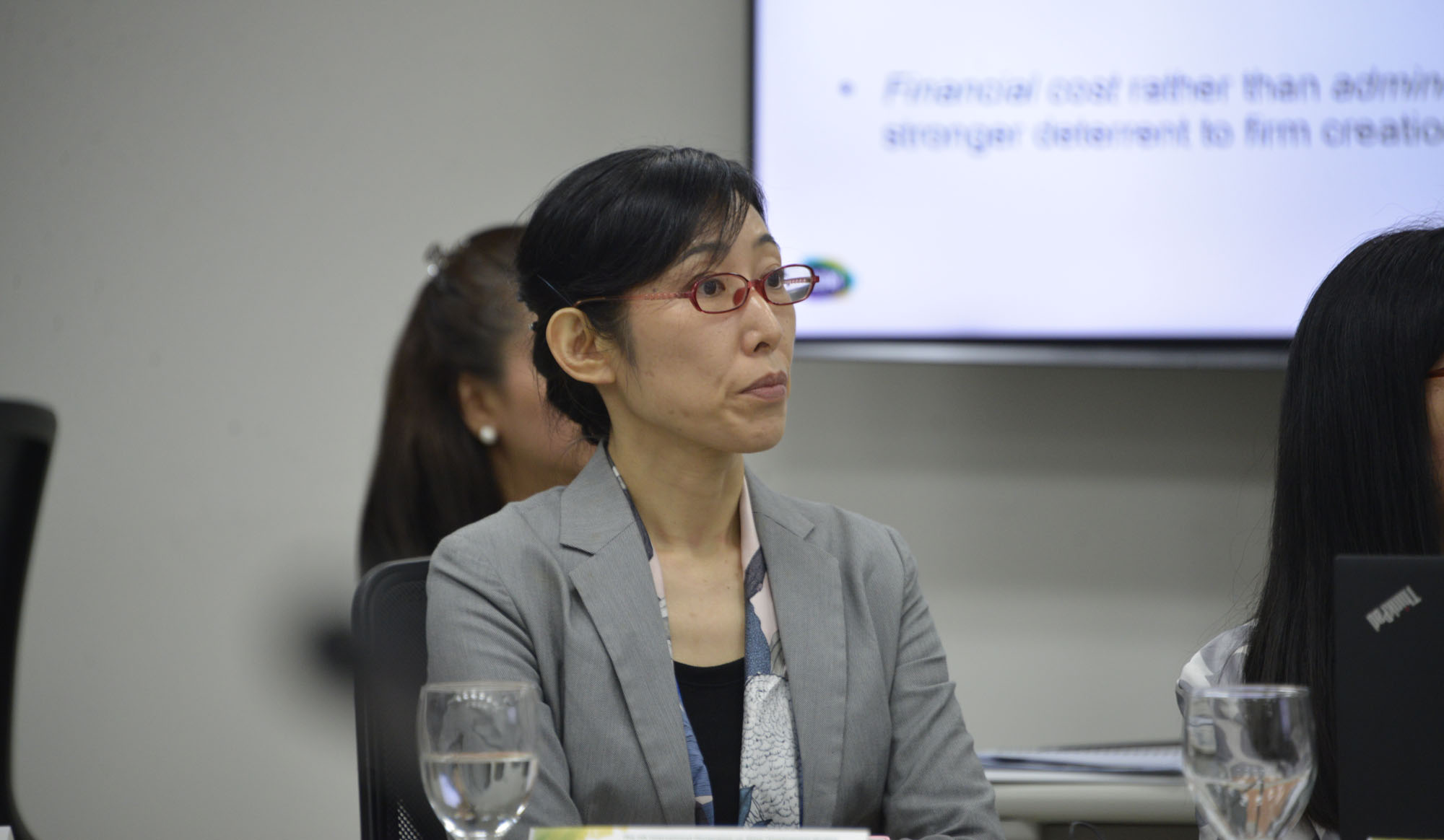Global markets for goods and services have opened for countries that have made substantial investments in technological innovations in transportation, communications and production techniques, inventory management and the rapid rate of innovation in financial instruments, among others. This study presents in broad strokes a chronicle of infrastructure development in the Philippines in the last twenty-five years. It covers the infrastructure experience across the Marcos regime to the Estrada administration. The main objective of this paper is to flag those gaps and issues for future research, policy analysis and policy formulation. It calls particular attention to several constraints, e.g., large budget deficits faced by the national government, inefficient government implementation of infrastructure projects, unclear policy and regulatory framework for private participation in infrastructure. Among others, it brings attention to the design of the regulatory framework for infrastructure that would be necessary to motivate private sector participation. It is important to consider an appropriate regulatory framework to ensure fair competition, adequate returns to the private investor and consumer welfare. It is equally important to develop the appropriate incentives that should inform that regulatory framework.
Citations
This publication has been cited 13 times
- Aldaba, Rafaelita M.. 2005. The impact of market reforms on competition, structure and performance of the Philippine economy. Discussion Papers DP 2005-24. Philippine Institute for Development Studies.
- Aldaba, Rafaelita M.. 2005. The impact of market reforms on competition, structure and performance of the Philippine economy. Trade Working Papers 22306. East Asian Bureau of Economic Research.
- Cabalfin, Michael R. and Josef T. Yap. 2008. Sustainable development framework for local governance. Governance Working Papers 22619. East Asian Bureau of Economic Research.
- Cabalfin, Michael R. and Josef T. Yap. 2008. Sustainable development framework for local governance. Development Economics Working Papers 22624. East Asian Bureau of Economic Research.
- Medalla, Felipe M., Raul V. Fabella, and Emmanuel S. de Dios. 2014. Beyond the remittances-driven economy: Notes as if the long run mattered. UP School of Economics Discussion Papers 201411. University of the Philippines School of Economics.
- Navarro, Adora. 2005. Build-Operate-Transfer (BOT) arrangements: The experience and policy challenges. Discussion Papers DP 2005-01. Philippine Institute for Development Studies.
- Navarro, Adora. 2005. Build-Operate-Transfer (BOT) arrangements: The experience and policy challenges. Microeconomics Working Papers 21978. East Asian Bureau of Economic Research.
- Patalinghug, Epictetus and Gilberto M. Llanto. 2005. Competition policy and regulation in power and telecommunications. Discussion Papers DP 2005-18. Philippine Institute for Development Studies.
- Patalinghug, Epictetus E. and Gilberto M. Llanto. 2005. Competition policy and regulation in power and telecommunications. Microeconomics Working Papers 22048. East Asian Bureau of Economic Research.
- Phillips, Mark. 2007. Household water in rural asia: a case study of the construction of a piped water system in Bangui, Ilocos Norte, Philippines. Environment, Development and Sustainability: A Multidisciplinary Approach to the Theory and Practice of Sustainable Development, 9, no. 3, 241-261. Springer.
- Singha, Komol. 2011. Infrastructure and regional disparity a case of North Eastern region of India. Journal of Social and Development Sciences, 2, no. 4, 162-180. AMH International.
- World Bank. 2005. Philippines: From short-term growth to sustained development. World Bank Publications - Reports 8552. The World Bank Group.
- Yap, Josef T. and Michael R. Cabalfin. 2008. Sustainable development framework for local governance. Discussion Papers DP 2008-33. Philippine Institute for Development Studies.

